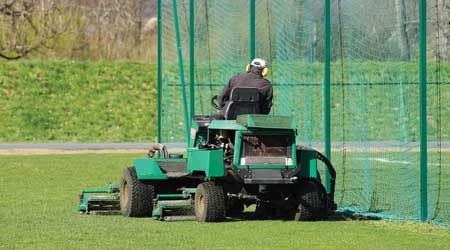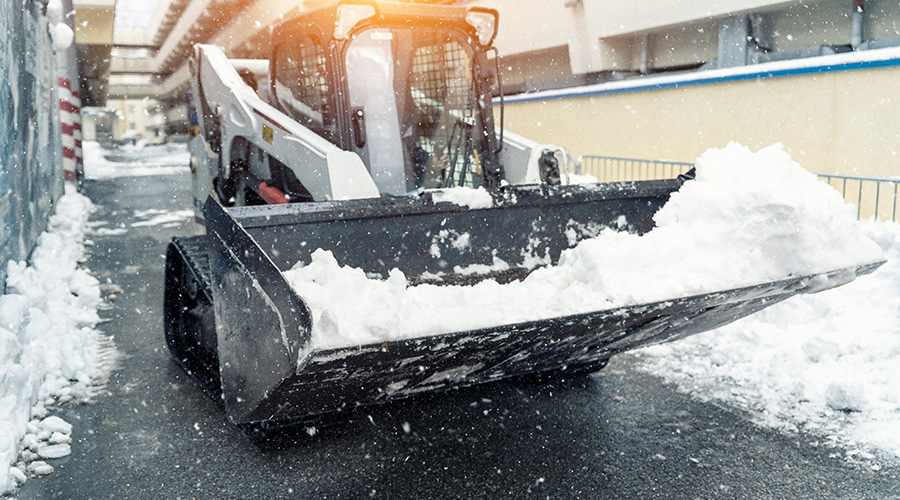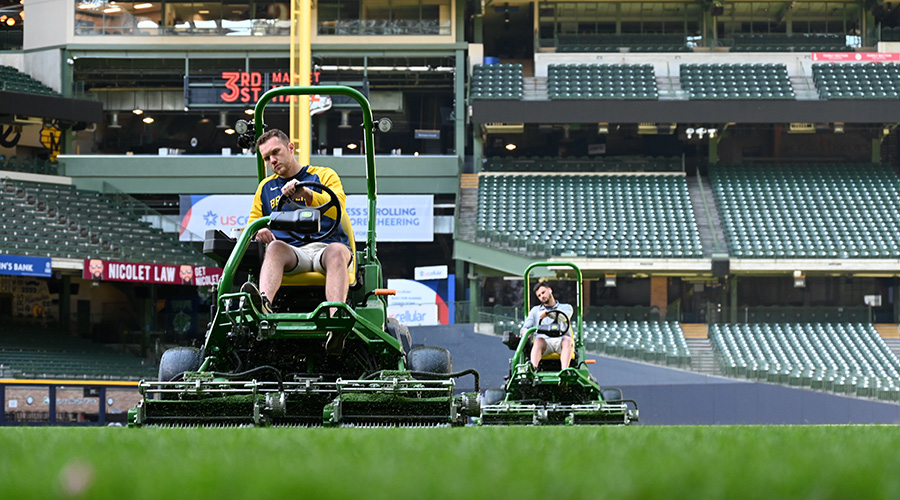Four Key Considerations for Mower Selection
Managers who pay attention to features and function at the time of purchase can ensure long-term performance.
New-generation mowers have evolved to meet the changing demands of grounds care departments in institutional and commercial facilities. While managers purchasing new mowers tend to focus on such issues as cost, size and power, they also must pay attention to equipment maintenance.
By understanding a landscape’s mowing needs, available equipment options and long-term maintenance goals, managers ultimately will be able to purchase a mower that will provide the performance they are seeking.
Preparing to purchase
Grounds managers who have not purchased a mower in a while might be shocked at the choices available from manufacturers. No longer are managers forced to choose from the models in stock. Instead, manufacturers now enable customers to build a mower to fit a department’s unique needs. The choices of styles, engines, and decks can easily overwhelm a buyer, but managers who are prepared for the process will find that the process and the options will result in the most appropriate mower for the site.
The process of purchasing a mower requires patience. The first step is to research the types of machines that are available. Manufacturers continually integrate new and emerging technologies into new mowers, so it is important to understand the current market. Trade magazines and local dealerships are the best sources of the latest developments in the industry. When they return, trade shows also are key sources of information for managers trying to keep up with new features, functions and options.
One important consideration is understanding the mower brands that are available in a particular area. It does no good to debate between two different mowers if one of them is not available in the area for sales or service. Contacting local dealers will help managers understand their options. Managers also can contact manufacturers directly for information on dealer networks in the area.
After identifying local contacts, the next step is to arrange for demo equipment to be used on the site in question. Allowing mower mechanics and operators to inspect and try out a specific model on site will help managers in choosing the equipment’s major features and components. Managers need not focus too much about a dealer having the exact model under consideration, since it is unlikely that they will have the exact combination.
Four key considerations
Managers purchasing a new mower can focus on four key components and styles.
The size of the deck is critical. If the deck is too large, operators will not be able to mow in tight areas and the result will be a lower quality cut. If the deck is too small, operators will take longer to mow and, as a result, will not be as productive. Articulated or independent decks allow for larger cut swaths while delivering a higher-quality cut. They are able to follow the undulations in the ground and will cut without scalping. Larger decks are prone to scalping on hilly terrain. When in doubt, a smaller deck of the same style will provide a better cut.
The style of the mower also will be critical to the operator’s success. For larger properties, wide-area mowers and zero-turn mowers offer operator comfort combined with efficiency. Walk-behind mowers are popular lower-cost options for working in smaller or specialized areas. Stand-on machines are a blend of walk-behind and zero-turn mowers that have become popular over the past decade. These mowers have many of the high-end options available on zero-turn models but offer the flexibility of the walk-behind mowers for tighter and smaller turf areas. They also offer a price point between the two styles. Lastly, managers can consider push mowers, which are available in many different configurations and appealing to operators who need to work in smaller areas.
The third critical component is the type of discharge for the mower. Traditionally, managers have been able to choose from among mulching, side-discharge and rear-discharge decks. Newer zero-turn mowers allow for a combination of a discharge and mulch deck that the operator can switch by pedal or cable. As with any new technology, these come with tradeoffs separate from cost. While this option mulches well, operators will get the best mulching results from a dedicated mulch deck.
These decks also add complexity to the machine and more parts that can break. The choice depends on what kind of turf is being mowed and the size of the mower fleet. Managers also need to consider whether they want a bag attachment or leaf-collection system, as these features might not be compatible with all decks.
The last critical component to consider is the engine. Gasoline- and diesel-powered engines traditionally have been the only options available, but managers now must be prepared to make decisions from among more options. Diesel engines have become more powerful and are available on the fullest-featured zero turns. They provide great power and might outlive the rest of the mower.
Gasoline engines are now available in carbureted and electronic fuel injected (EFI) options. The EFI options are more fuel efficient and via the addition of a computer module can provide other features, such as the ability to automatically lower the RPM when the PTO is engaged. This feature eliminates damage from employees engaging at full speed.
Propane engines are also becoming popular options for managers who want the functionality of a gasoline engine machine but also want a lower carbon footprint. Managers also can select mowers with electric motors. Mowers powered by electricity have become popular over the past few years and are now viable options for many operations. They are available in all sizes, from push mowers to zero-turn models. For sites where noise is a consideration, these mowers can be game changers.
Related Topics:













